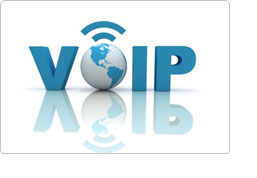 Voice over Internet Protocol, or IP telephony, is a technology that enables you to make ordinary telephone calls over a computer network or the Internet. VoIP converts the data signals from your telephone into digital signals and sends these signals in packets over the Internet. It then converts them back on the other end, allowing you to speak to virtually anyone with a telephone. Today, companies use VoIP technology to reduce or eliminate long-distance costs, include remote or home-based employees on their enterprise calling systems, or enable these remote employees to retain a company extension as if they were working on-site.
Voice over Internet Protocol, or IP telephony, is a technology that enables you to make ordinary telephone calls over a computer network or the Internet. VoIP converts the data signals from your telephone into digital signals and sends these signals in packets over the Internet. It then converts them back on the other end, allowing you to speak to virtually anyone with a telephone. Today, companies use VoIP technology to reduce or eliminate long-distance costs, include remote or home-based employees on their enterprise calling systems, or enable these remote employees to retain a company extension as if they were working on-site.
Because of the bandwidth efficiency and low costs that VoIP technology can provide, businesses are migrating from traditional copper-wire telephone systems to VoIP systems to reduce their monthly phone costs. In 2008, 80% of all new PBX lines installed internationally were VoIP.
VoIP solutions aimed at businesses have evolved into unified communications services that treat all communications—phone calls, faxes, voice mail, e-mail, Web conferences and more—as discrete units that can all be delivered via any means and to any handset, including cellphones. VoIP allows both voice and data communications to be run over a single network, which can significantly reduce infrastructure costs.

